The Short List: The New Testament Figures Known to History
034
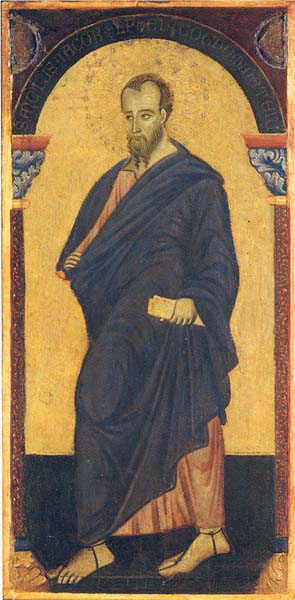
The relatively plain ossuary (bone box) described in the preceding article by André Lemaire is doubly important to the study of early Christianity. It is the earliest archaeological artifact ever found that refers to Jesus; in fact, it is the only nearly contemporaneous artifact that mentions Jesus. This gives it a breathtaking significance in the history of early Christianity. The bone box also greatly adds to the short list of New Testament characters known outside the Bible. It refers not only to James, the leader of the nascent Christian community in mid-first century C.E. Jerusalem, but also mentions his father, Joseph, and most important of all, his brother Jesus.
Apart from the significance of each of the names, the James inscription is remarkable because it attests three names—an unprecedented number in any single inscription—and confirms what the Bible says about their familial relationship.
The bone box dates to 63 C.E., one year after James’s death and only a few years before the Gospel of Mark was composed in about 70 C.E.; most scholars consider Mark the earliest gospel.
Before the James ossuary came to light, the earliest mention of Jesus was in the Rylands Papyrus—the earliest known Gospel fragment. Dating to about 125 C.E.—about 100 years after Jesus’ death—and measuring only 3.4 inches high, the fragment bears the Greek text of John 18:31–33 and 18:37–38. (Interestingly, we know of two ossuaries inscribed “Yeshua [Jesus], son of Joseph,” but those names were so common in first-century C.E. Jerusalem that we have no 035reason to think they refer to the Jesus and Joseph of the New Testament.)
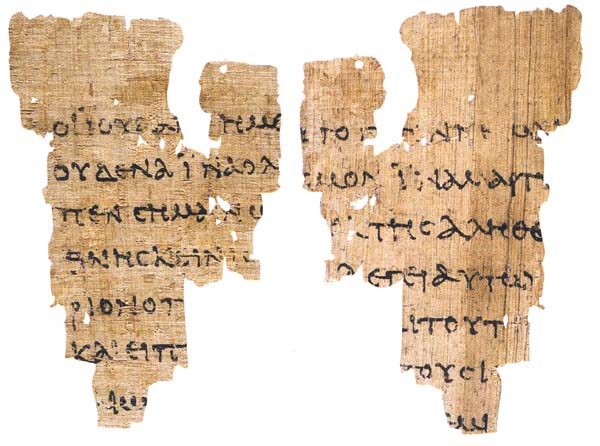
Before the discovery of the James bone box, our historical knowledge of individuals in the New Testament was confined almost exclusively to a small number of public figures in the Roman and Jewish 036worlds. We will review here a selection from this short list of figures and the artifacts that bear their names; not included here are inscriptions that require extensive reconstruction to make sense, or that provide simply a title without a name (such as “Ethnarch”), or that include names that were so common in the New Testament period that they may or may not refer to someone in the Bible.
The New Testament figure who was the best known at the turn of the era was Herod the Great, who ruled Judea under the patronage of Rome from 37 to 4 B.C.E. Herod is mentioned frequently in the New Testament and by Josephus and other ancient historians. His impact can still be seen at the numerous impressive sites for which he was responsible. As part of a remarkable and audacious building program, Herod constructed the port city of Caesarea Maritima, grand palaces at Jericho, the desert fortress at Masada—and greatly expanded the Temple Mount platform in Jerusalem and rebuilt the Temple, to name just a few of his projects.a
Herod and his family are also attested on coins they minted. On a bronze coin (measuring about 1 inch in diameter) that was apparently struck in Samaria during the third year of Herod’s rule, Greek letters reading “of King Herod,” surround a tripod of Apollo. Herod’s great-grandson, Herod Agrippa II (ruled c. 50–93 C.E.) is called King Agrippa in Acts 25:13–26:32, in which he hears Paul’s self-defense. A coin minted in Caesarea Philippi (Banias) during the reign of Domitian (81–96 C.E.) bears the name Agrippa (
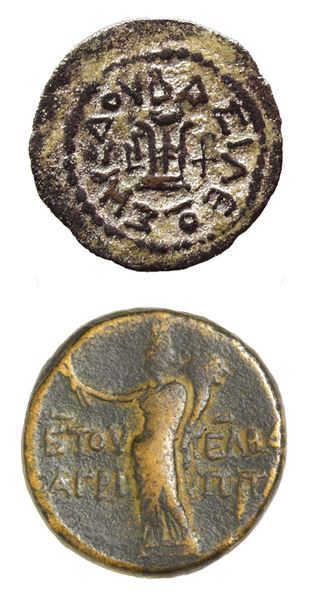
None of Herod’s successors wielded as much power as he did. By the time Jesus entered Jerusalem at the climax of his ministry, the most powerful figure in the province was Pontius Pilate, the Roman governor of Judea. Pilate ruled from about 26 to 37 C.E. from the seaport of Caesarea, the Roman provincial capital. The Gospel accounts of Jesus’ trial depict Pilate as not fully convinced of Jesus’ guilt; he acquiesces to crucifying Jesus only after pressure from mobs in Jerusalem and from their leaders. In Matthew 27:24, Pilate famously “washes his hands” of the decision and declares, “I am innocent of this man’s blood.”
For many centuries, our knowledge of Pilate outside the New Testament came from the writings of Josephus, a first-century C.E. Jewish historian; from Philo, a first-century C.E. Jewish philosopher; and from the Roman historian Tacitus (c. 55–120 C.E.). That changed, however, in 1961, when excavators at Caesarea uncovered a limestone block 037inscribed in Latin that reads:
TIBERIEUM
[PO]NTIUS PILATUS
[PRAEF]ECTUS IUDA[EA]A
“Tiberieum
Pontius Pilate
Prefect of Judaea”
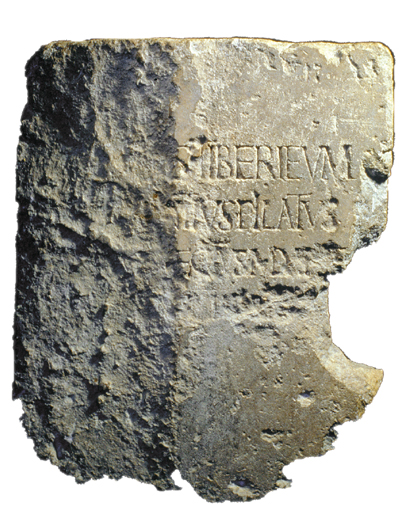
The dedicatory inscription was carved for a building erected by Pilate in Caesarea in honor of Emperor Tiberius. Unfortunately, the inscription was partly destroyed when the stone was cut for reuse as a step in a Byzantine fortress. (Some coins minted by Pontius Pilate have also survived.)
A second key figure during the last days of Jesus is Caiaphas, the high priest of the Jerusalem Temple. Caiaphas appears in three gospels (all except Mark) and in Acts. Matthew 26 describes Caiaphas and other priests interrogating Jesus and then handing him over to Pilate for trial.
According to Josephus, Caiaphas was actually a family nickname, and he refers to the high priest as “Joseph, who was called Caiaphas.” A discovery made in 1990 in a Jerusalem burial cave casts more light on the matter. Among a dozen ossuaries was one particularly ornate bone box that was inscribed on the back and on one side with the name “Joseph son of Caiaphas.” Inside the box were the remains of six individuals: four young people, an adult woman and a man about 60 years old. The last is likely to have been the high priest who appears in the New Testament.b

Two more minor New Testament figures are known from the historical record. Acts 13:6–12 tells of Paul’s missionary visit to the town of Paphos, Cyprus, and of his meeting with the Roman governor, Sergius Paulus, whom he converted to Christianity. A stone found in a town near Paphos bears the name of Sergius Paulus and his title, “proconsul,” attesting to the name and office. (Not shown here is a memorial stone inscribed with the same name, which was found ten years later in Rome, where Sergius Paulus returned after completing his service as governor in Cyprus.)
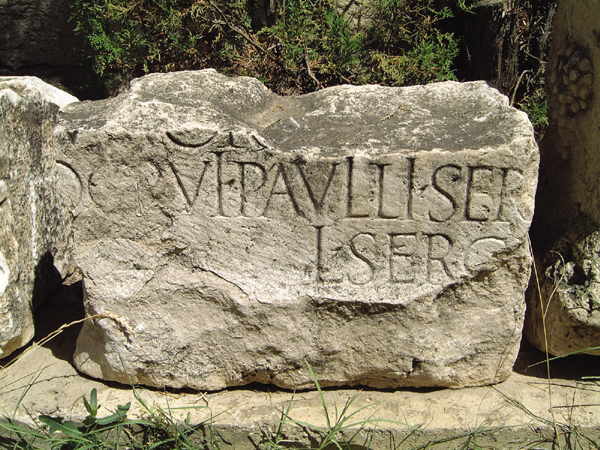
Lastly, inscribed on several pieces of broken stone found in Delphi, Greece, is the fragmented text of a letter from the Roman emperor Claudius (41–54 C.E.) that mentions “Gallio my friend and proconsul.” According to Acts 18:12–17, Gallio was proconsul of Achaia, near Corinth in Greece. The inscription confirms not only that Gallio occupied the office, but that he was installed as proconsul at Achaia while Paul was in Corinth. Now on display in Delphi, the inscription is used by some scholars as an anchor for the chronology of Paul’s activities.
This short list of names—none with the significance of the three names on the newly revealed ossuary—underscores the striking importance of the new find. With the discovery of the simple burial box inscribed with the name of James, the son of Joseph and the brother of Jesus, we now add to this brief list a new archaeological landmark.
The relatively plain ossuary (bone box) described in the preceding article by André Lemaire is doubly important to the study of early Christianity. It is the earliest archaeological artifact ever found that refers to Jesus; in fact, it is the only nearly contemporaneous artifact that mentions Jesus. This gives it a breathtaking significance in the history of early Christianity. The bone box also greatly adds to the short list of New Testament characters known outside the Bible. It refers not only to James, the leader of the nascent Christian community in mid-first century C.E. Jerusalem, but also mentions his […]
You have already read your free article for this month. Please join the BAS Library or become an All Access member of BAS to gain full access to this article and so much more.
Already a library member? Log in here.
Institution user? Log in with your IP address or Username
Footnotes
See David Jacobson, “Herod’s Roman Temple,” BAR 28:02.
See Zvi Greenhut, “Burial Cave of the Caiaphas Family,” BAR 18:05.
